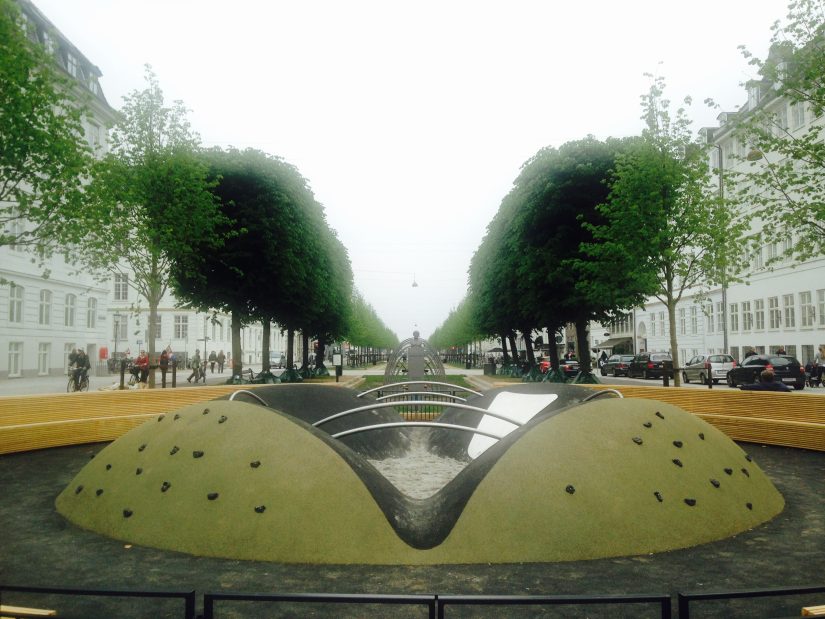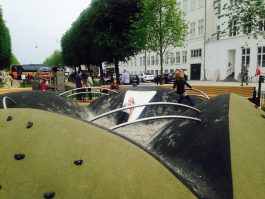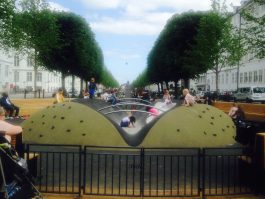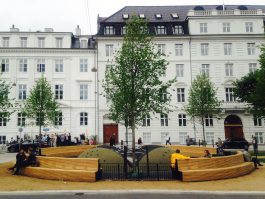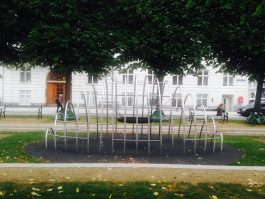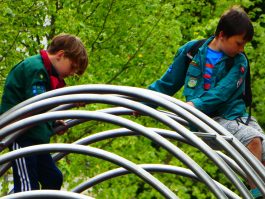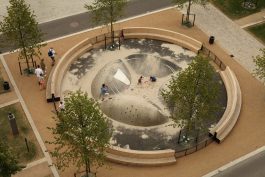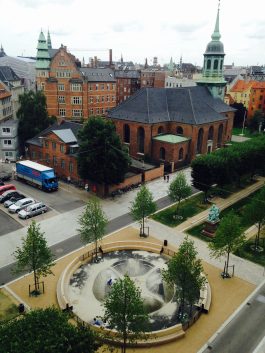Sankt Annæ Wheel are sculpturally conceived as a play sculpture for toddlers and slightly older children. With this work Eva Koch demonstrates that sculpture is an important element in the planning of urban spaces, that a sculpture can also function as something that can be played on and can create a local place, and that as a sculptor one must proceed with delicacy in relation to a specific site.
Sankt Annæ Wheel consists of two sculptures – a hilly landscape and a climbing frame – created specially for Sankt Annæ Plads, as part of the refurbishing and climate adaptation of the area.
Seen from above the hill landscape forms a circle with 4 openings. Viewed from the side, it presents 4 hills that form the periphery of the circle. In the middle of the circle between the soft hills, there is white beach sand. The four hills are clad with black and grey rubber playground surfacing, which makes them attractive and safe for children to play on. The whole sculpture invites children to climb, run and play inside, on and outside the form, which they meet physically one-on-one. The hills are bigger than the little children’s bodies, and for them it is a landscape in which they can disappear from the surrounding world, for instance when they are sitting in the sandpit in the middle.
The 4 hills are ringed around by 4 curved sections of bench, each about 6 meters long, which also serve to shelter and enclose the square. Irrespective of the position from which one is looking, the sculpture presents different variations of the circle, also in form of the railing that connects the hills in pairs.
The climbing frame construction is built of 17 steel hoops, which together form an organic shape like an armadillo or a cat arching its back. In the animal’s stomach there is a round hammock that the children can climb up into.
Standing at the end of the hill landscape and looking towards the climbing frame, one can clearly see how deliberately Eva Koch has worked to allow the hoops to enter into a delicately staggered interaction – with each other and with the surrounding trees and in harmonious contrast with the severe lines of the classicistic buildings around the square.
The sculptures have been subjected to a good many restrictions with respect to height, colour, materials, placing in relation to the underground technical installations, all dictated by the overall architectonic plan for the refurbishing of the square. Many compromises had to be entered into on the way to the completed work, but its final expression is natural and convincing, and there is no sign of the compromises.
